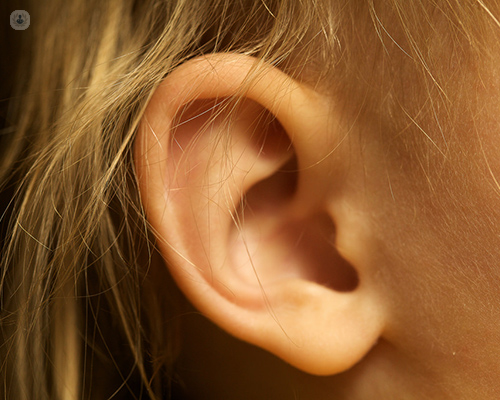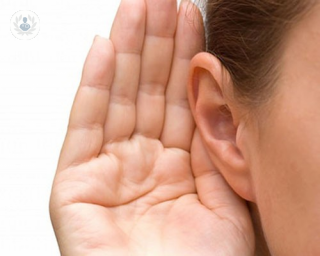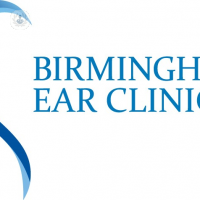Otosclerosis
Mr Peter Monksfield - Otolaryngology / ENT
Created on: 09-17-2014
Updated on: 09-27-2023
Edited by: Kate Forristal
What is otosclerosis?
Otosclerosis is a medical condition that affects the bones of the middle ear, specifically the stapes bone. The stapes bone, also known as the stirrup bone, is one of the three tiny bones in the middle ear responsible for transmitting sound vibrations from the outer ear to the inner ear.
In otosclerosis, abnormal bone growth occurs in the middle ear, particularly around the stapes bone. This abnormal bone growth can interfere with the normal movement of the stapes, leading to hearing loss. Otosclerosis is a common cause of conductive hearing loss, which means that it affects the transmission of sound through the ear.
It is very important to have regular check-ups with your otolaryngologist (ENT) specialist to control bone growth and prevent hearing loss.

What are the symptoms?
The symptoms of otosclerosis can vary from person to person, and some individuals may experience more severe symptoms than others. Common symptoms of otosclerosis include:
Gradual hearing loss: This is the most common and characteristic symptom of otosclerosis. Hearing loss in otosclerosis typically starts in one ear but can eventually affect both ears. The hearing loss is often progressive and may become more significant over time.
Tinnitus: Many individuals with otosclerosis experience tinnitus, which is a ringing, buzzing, or hissing noise in the affected ear(s). Tinnitus can be constant or intermittent and is often more noticeable in quiet environments.
Dizziness or balance issues: While less common, some individuals with otosclerosis may experience dizziness or problems with balance. This is typically due to the involvement of the inner ear structures or pressure changes caused by the condition.
Sound distortion: Some people with otosclerosis may perceive sounds as distorted or muffled. This can make it challenging to understand speech or hear certain frequencies clearly.
Difficulty hearing in noisy environments: Individuals with otosclerosis may have particular difficulty hearing and understanding speech in noisy environments, such as crowded restaurants or social gatherings.
What are the causes of otosclerosis?
The symptoms of otosclerosis are produced by the abnormal growth of a spongy bone in the middle ear. This prevents the bones of the middle ear from vibrating to the sound waves and therefore makes hearing impossible.
The cause of otosclerosis itself is unknown, although there is a hereditary factor involved.
Is otosclerosis preventable?
It is not possible to prevent otosclerosis and so its early detection is essential in order to provide the necessary treatment and avoid hearing loss.
Treatment of otosclerosis
Untreated otosclerosis will get worse and affect hearing. To treat the problem a stapedectomy or stapedotomy surgery is performed in which the bones of the middle ear (abutment) are replaced in whole or in part by prosthesis.













